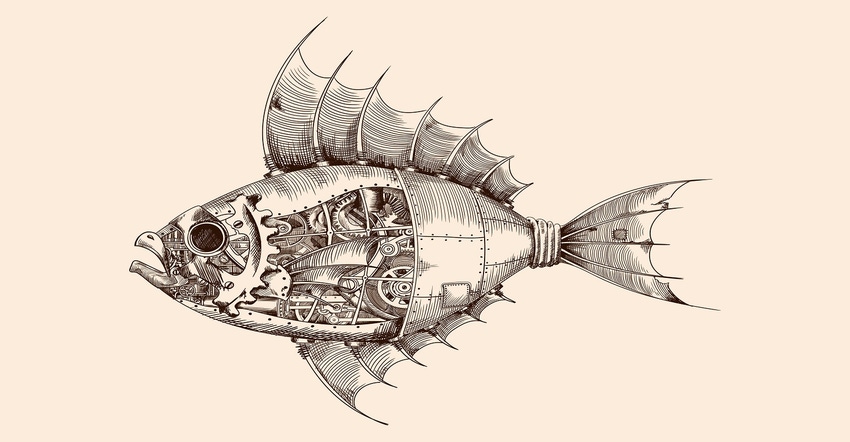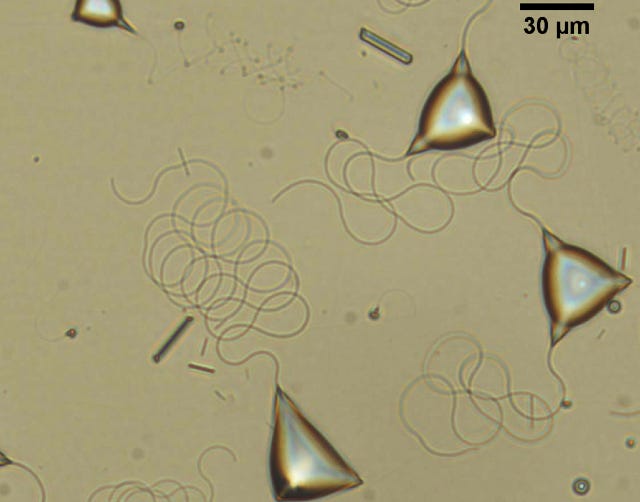Want Your Robots to Swim? Feed Them Oil and Water
Researchers hope scientists can use the bots to learn more about the basic interactions between living organisms.
July 27, 2021

Oil and water typically don’t mix. Yet researchers have used a simple combination of the two—the latter containing a detergent-like substance—to create tiny swimming robots that can both move and recharge on their own.
A team from Queen Mary University of London developed the artificial swimmers from doped oil droplets that use temperature fluctuations in their surroundings to store energy and swim.
The team—led by Stoyan Smoukov, a leader in chemical engineering at the university—hopes their invention can be used to help scientists learn more about the basic interactions between living organisms, such as bacteria and algae, he said. Collaborators from Sofia University in Bulgaria also worked on the project.

“By mixing our simple artificial swimmers with groups of living organisms we could develop a clearer picture of how biological microswimmers communicate with each other,” Smoukov said in a press statement. “For example, do they only communicate due to the physical act of bumping into each other, or are there other chemicals or signals released into the environment essential for their interaction.”
Temperature-Driven
While other types of artificial swimmers similar to the droplets exist, their movements are either driven by chemical reactions, which create bubbles that propel the swimmers through fluids, or by physical forces such as magnetic or electric fields.
The new class of swimming robots developed by the team, which are about the size of a red blood cell, instead can form and move spontaneously based on temperature changes.
When the bots cool, the oil droplets release thin threads resembling tails into the environment. Friction is then generated between the tails and the fluid surrounding the tiny swimmer, causing it to move.
Heating is what allows the swimmers to harvest their own energy. When the heat, the droplets retract their tails and return to their original state, using the heat from their environment to recharge for future movement, researchers said. In fact, they can recharge multiple times and can swim for up to 12 minutes at a time.
Relevance and Applications
Researchers published a paper on their work in the journal Nature Physics.
Smoukov said that the simplicity of the work is what makes it especially relevant for other scientists and even curious people outside of the field.
While to create even the simplest artificial cells in biology, scientists need more than 470 genes, the team used just “a few simple and inexpensive components” to create a new type of active matter that can change shape and move just like a living thing,” he said.
“We hope that this study will open up the opportunity for people to engage in cutting-edge science,” Smoukov said in a press statement. “As the only equipment needed is a simple optical microscope, people could create these microswimmers with the most basic laboratory set-ups, or even at home.”
Overall, the robots can provide a clearer picture of the complex communication between tiny living organizations such as bacteria, a puzzle scientists still have yet to completely solve, he added.
“In nature, we often see large numbers of organisms such as bacteria grouping together, but our understanding of how these organisms interact with each other is incomplete,” Smoukov said.
Elizabeth Montalbano is a freelance writer who has written about technology and culture for more than 20 years. She has lived and worked as a professional journalist in Phoenix, San Francisco, and New York City. In her free time, she enjoys surfing, traveling, music, yoga, and cooking. She currently resides in a village on the southwest coast of Portugal.
About the Author(s)
You May Also Like



